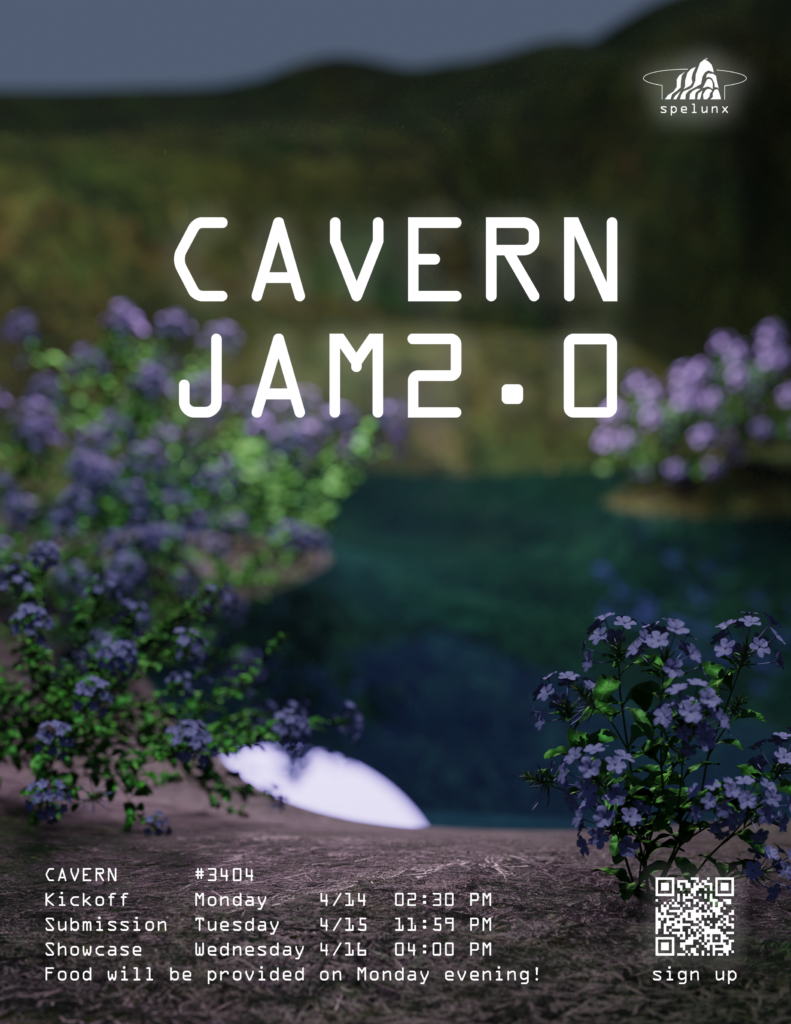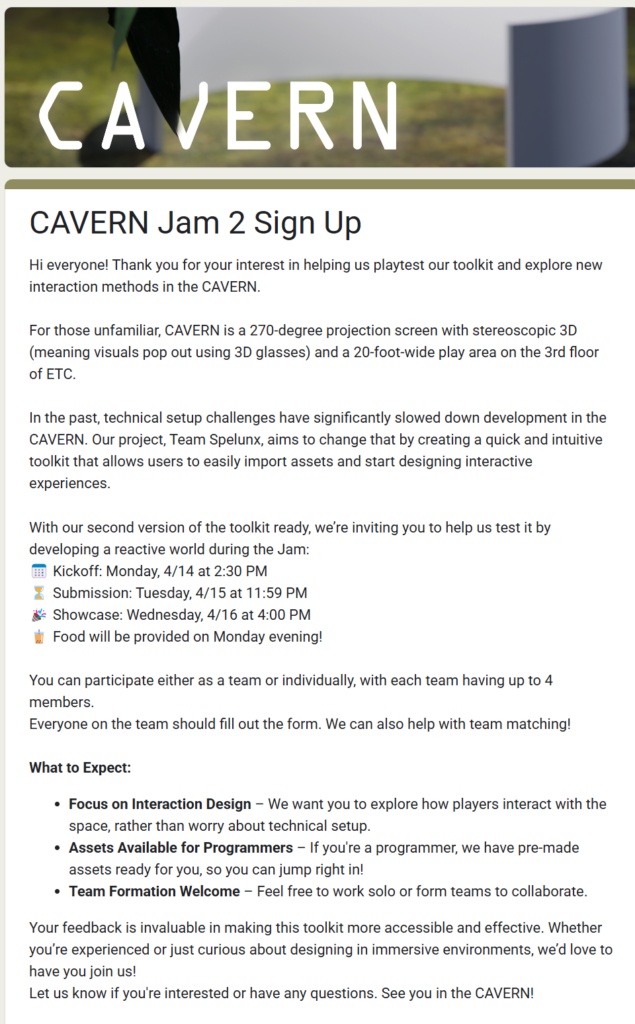Playtesting ended last week. This week, we continued with all the features development for our toolkit that were halted previously to prepared for Playtesting both at South Fayette and ETC. This week, our main focus was starting on Orbbec Body Tracking integration, continuing RenderGraph, as well as wrapping up on keyboard shortcuts. In this week, we will also give an overview of all the little but crucial improvements we’ve made during the hectic testing and demoing schedules in the previous weeks in the hopes of informing a more comprehensive list of toolkit feature plan.
New Features
CAVERN Preview as a Gizmo
Because the original CAVERN Previewer is a mesh that is generated by the camera, when baking lighting details to the scene to optimize performance, errors will show up. (This happened in Alex’s Flesh Wall made during the first CAVERN jam). This is why, we migrated this previewer to a gizmo!

Debug Keys
People have requested hotkeys so we can “toggle stereo and mono views”, “change to headtracking with a button click”, etc. And we made that happen. Now, when you press “h” during play mode, you’ll see the available debugging keys as well as frame rates and tracker statuses.
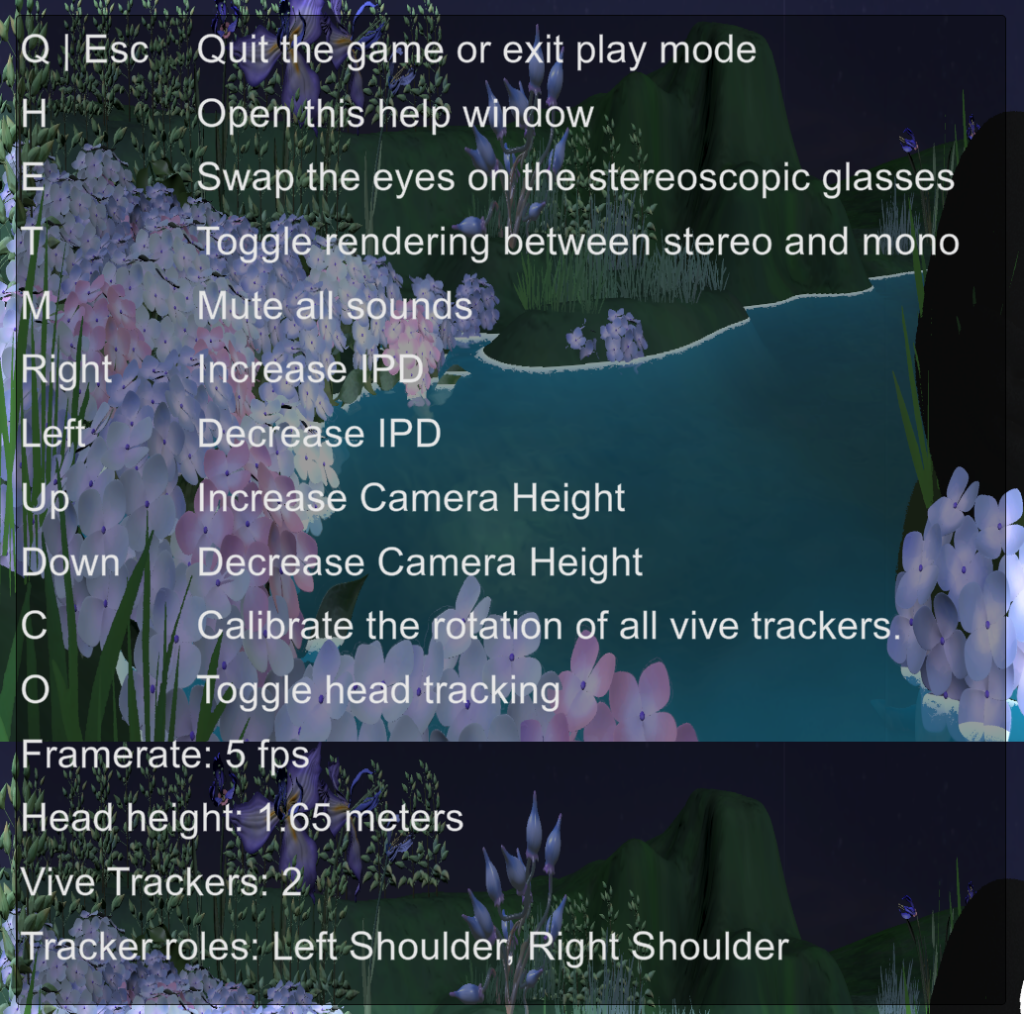
Fullscreen On Play
Fullscreen On Play is a really useful tool when you are testing on the CAVERN directly in the Unity Editor without building — it lets you see the true views of the scenes without the view being interrupted or disrupted by the Unity Editor GUI.
However, at the start of the semester, the asset that was used was a paid asset from Unity Store, and it continuously caused crashes when exiting play mode on the CAVERN computer.
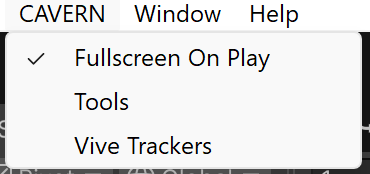
Fortunately, Ezra, our technical consultant, was able to create one for our purposes, so now we have a Fullscreen On Play feature that developers can toggle on and off during development.
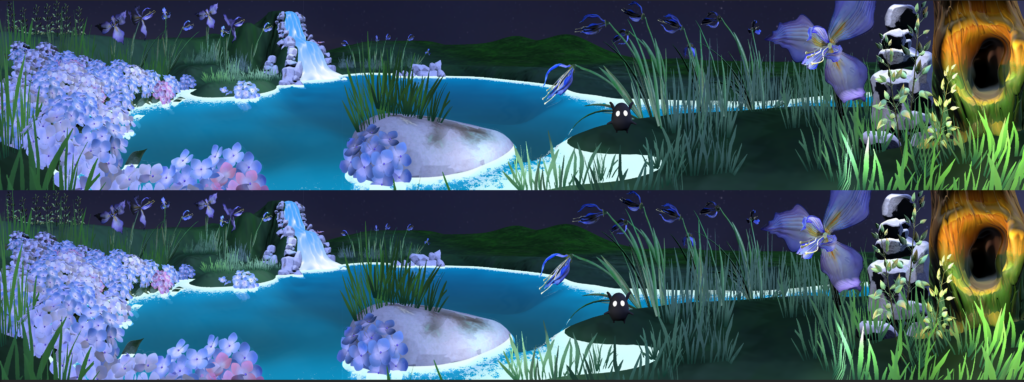
RenderGraph
RenderGraph is Unity’s new system for customizable render pipelines. Since we are using Unity’s default camera and bliting onto the screen via our own rendering code, we defined our own Scriptable Render Passes called Cavern Render Pass and specified it to be within the RenderGraph.
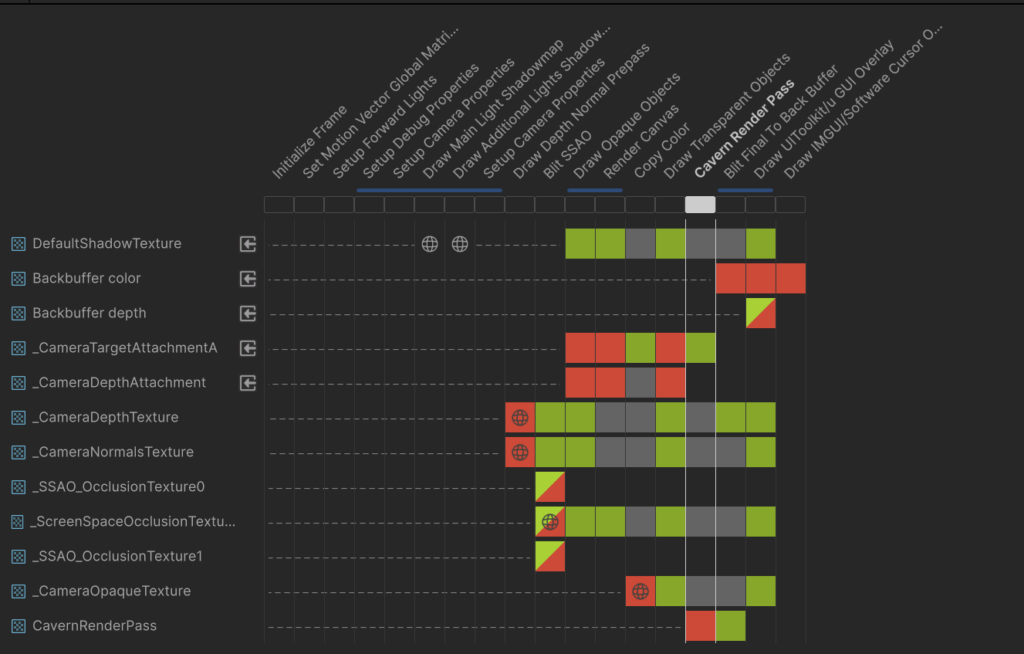
Canvas UI
We discovered there are two ways of thinking about the CAVERN: as a screen or as a window. Depending on which view you’re using, your user interface needs change. Because of this our toolkit supports three methods of creating in-game UI.
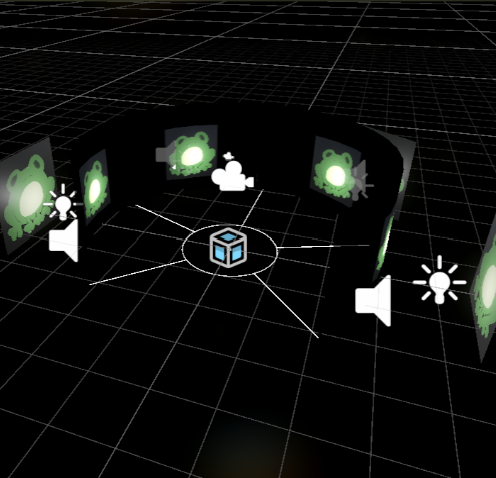
Flat world-space UI is best when treating the CAVERN as a window, since it ignores the curvature of the CAVERN. On other hand, while it can be rotated to face the center, it will always look like a flat plane.
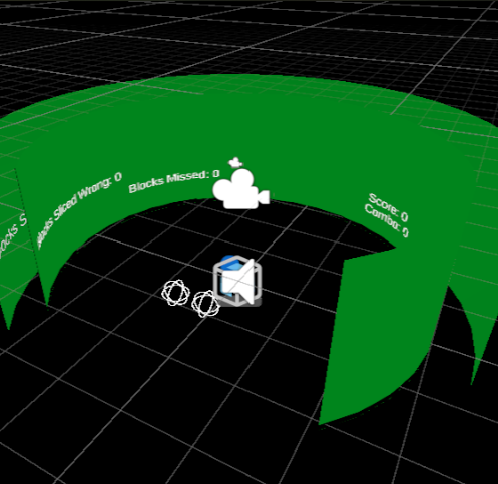
Round world space UI fixes this issue by wrapping a 2D plane around the CAVERN, so everything faces you. This is best when treating the CAVERN as a screen. Both of these options support object occlusion and proper stereoscopic 3D.
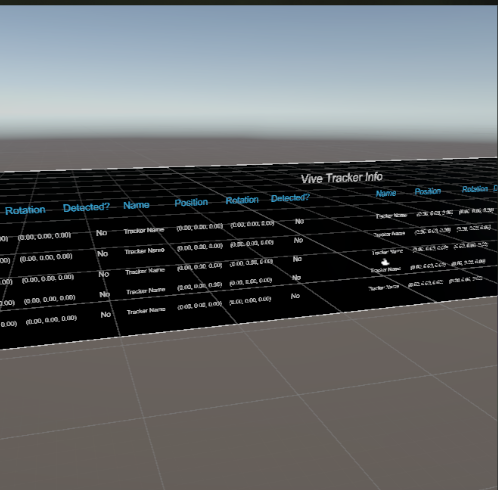
Our third option, screen space UI, always appears on top of everything and doesn’t fully support 3D, but avoids the overhead of our camera system. This is best when creating 2D experiences, or trying to display videos.
Editor UI
What says a finished and polished toolkit better than an intuitive and beautiful UI? For achieve that, we changed to use the UI Toolkit for our editors, and this allows us to customize the design through the UI Builder, as well as through code (UXML, UXX – HTML and CSS for Unity). We are also working on icons to add that final polish feel!
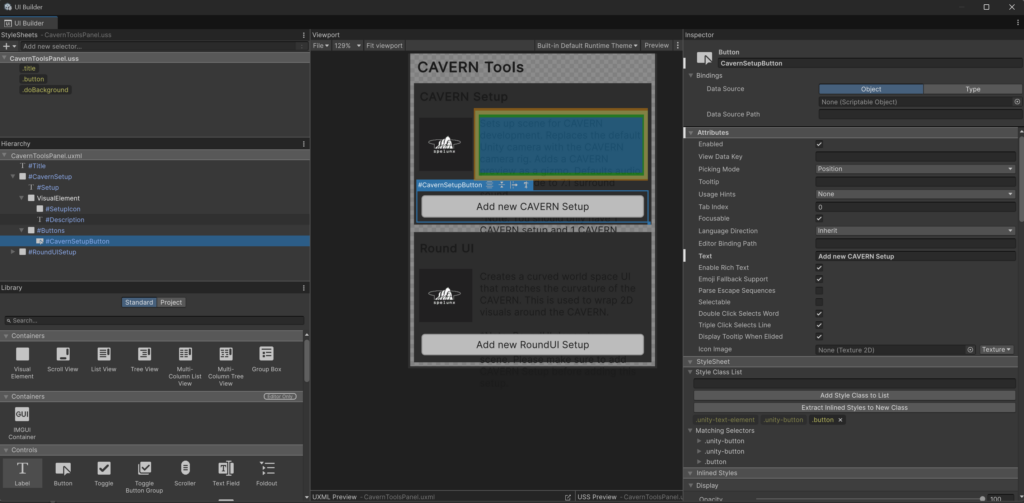
Orbbec Femto Bolts Body Tracking
Finally getting to another crucial tracker built into the CAVERN systems, at the start, because many other projects at ETC also used a Femto Bolt, we couldn’t access or test with one. That is why we started with the Azure Kinect DK, a predecessor of Femto Bolt, and one that Orbbec has built their body tracking sample wrapper upon.
Jam 2 Preparations
We have finalized our budget for the jam. From last time’s experience, we’ve learned that providing a meal for jammers will be both an incentive for people to join, as well as a deserved reward for everyone who will be spending time playtesting our toolkit.
This time, instead of simply ETC people, with official reach to high schools and greater university community, we hope to invite jammers from a broad range of groups, not only to show more people our project, but also diversify the experience levels of our testers to provide us with more insights for different people:
- ETC people who have been on a CAVERN project
- Main campus game developers
- People with no experience with CAVERN
This week, we created the poster and sign up sheets, as well as reached out to people. Next week, we are ready for new jammers and new worlds. Stay tuned!
